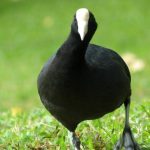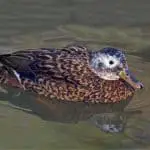Common Name: Sora
Scientific Name: Porzana carolina| Size | Diet | Range in Hawaii | Status in Hawaii |
|---|---|---|---|
| 8 in. - 12 in. | small invertebrates and plant matter | Big Island | Least Concern |
The Sora (Porzana carolina) is a fascinating bird species that is often heard but rarely seen. These small, secretive birds are known for their distinctive call, which sounds like a whinnying horse. They are found throughout much of North and Central America, and are often found in wetland habitats such as marshes and swamps.
While they have not established a population in Hawaii, they have been spotted on the Big Island as non-breeding visitors and vagrants. With their unique adaptations and elusive nature, Soras are a favorite among birdwatchers and nature enthusiasts. In this article, we will explore the fascinating world of the Sora, its unique adaptations, and the importance of conservation efforts to protect this species and its habitat.
Sora
Appearance
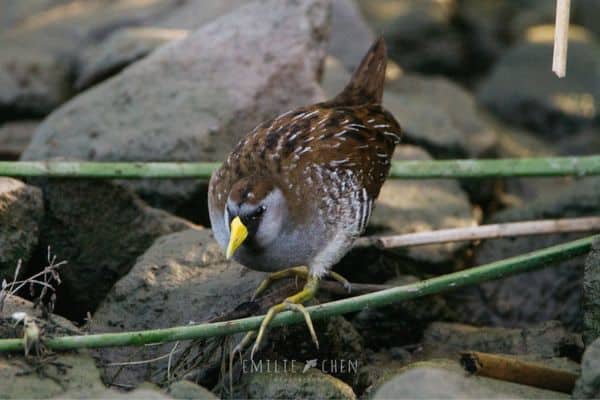
The Sora is a small, marsh-dwelling bird with a distinct appearance. It has a plump body with short wings and a short tail. The adult Sora measures approximately 8 to 11 inches (20 to 28 centimeters) in length.
It has a rounded head, a short, thick, yellow bill, and red eyes. The plumage of the Sora is mostly brown and gray, with a dark back, lighter sides, and a black face with a yellowish patch on the throat. Its underparts are grayish with white and black barring.
Diet
The diet of the Sora primarily consists of a variety of small invertebrates and plant matter. As an omnivorous bird, its diet includes insects, spiders, snails, and small crustaceans found in its marshy habitat. It also feeds on seeds, grains, and aquatic vegetation such as duckweed and smartweed.
The Sora uses its long, thin bill to probe and peck at the water’s surface and mud to extract food items. During the breeding season, it may also consume small fish and amphibians opportunistically. The specific composition of its diet may vary based on seasonal availability and local habitat conditions.
Nesting
The Sora builds its nest in dense vegetation within marshes or wetland habitats, weaving together a well-hidden cup-shaped structure using marsh plants like cattails, sedges, or grasses. Positioned a few inches above the water surface, the nest offers protection from predators and flooding, often concealed among tall vegetation. Both male and female Soras participate in gathering materials and defending the nesting territory.
A typical Sora clutch consists of 8 to 12 eggs, which are oval-shaped and buff or olive-brown with darker speckles. Both parents take turns incubating the eggs, with incubation lasting around 19 to 23 days.
Once the eggs hatch, the precocial chicks leave the nest shortly after and begin to forage with the parents. The young Soras become independent relatively quickly and can fly within a few weeks after hatching. The Sora is known for its secretive nesting behavior, relying on the dense vegetation and camouflage to protect its nest and young from potential threats.
Behavior
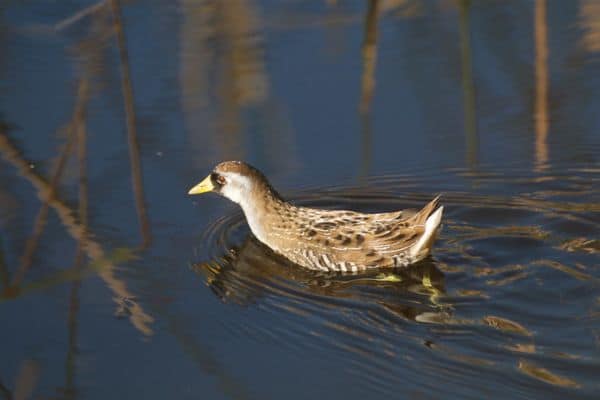
The Sora is a secretive and elusive bird known for its unique behaviors. Here is a short description of its behavior: The Sora is primarily active during the early morning and evening, often foraging in shallow water or along the edges of marshes.
It has a distinctive walking style, bobbing its body and flicking its short tail as it moves through the vegetation. While typically a shy and cautious bird, the Sora can occasionally be seen swimming or wading in water when necessary.
It has long toes that enable it to navigate through the marshy habitat, distributing its weight and allowing it to walk on floating vegetation. The Sora has a variety of vocalizations, including a descending whinny or whistling call, often heard during the breeding season.
Males and females may engage in duets or counter-singing, contributing to their territorial and courtship displays. During migration, Soras form loose flocks and can be seen flying in a zigzag pattern across open areas.
They undertake nocturnal migrations, making use of the cover of darkness to move between their breeding and wintering grounds. The Sora is primarily herbivorous, but it supplements its diet with small invertebrates, especially during the breeding season.
It uses its long, slender bill to probe in mud and vegetation for food items. Due to its secretive nature and preference for dense vegetation, the Sora is often more often heard than seen. It relies on camouflage and staying hidden to avoid potential predators.
Habitat
The Sora (Porzana carolina) is a bird species that inhabits wetland areas, particularly marshes, swamps, and freshwater marshy habitats. It prefers dense emergent vegetation, such as cattails, bulrushes, sedges, and other tall grasses, which provide cover and nesting sites.
Soras are commonly found in both natural and artificial wetlands, including flooded meadows, shallow ponds, and managed wetland areas. They have a preference for habitats with a mix of open water, mudflats, and vegetation, as these offer a diverse range of foraging opportunities.
The Sora’s habitat selection is closely tied to the availability of suitable food sources, such as seeds, aquatic plants, and small invertebrates found in marshy environments. The presence of dense vegetation not only provides nesting sites but also serves as a protective cover from predators.
These birds are often associated with areas that have a combination of shallow water and marsh vegetation, where they can forage for food by probing the mud, walking on floating vegetation, or swimming in shallow water.
Soras are migratory birds, with their breeding range extending across North America. During the winter, they migrate to southern regions, including parts of the United States, Mexico, and Central America, where they seek out similar wetland habitats.
Range
The Sora is a non-native bird species in Hawaii, and while they have not established a population, they have been spotted on the Big Island as non-breeding visitors and vagrants. Their presence in Hawaii adds to the diversity of bird species found in the state, but also raises concerns about the potential impacts on native species and ecosystems.
Conservation Status
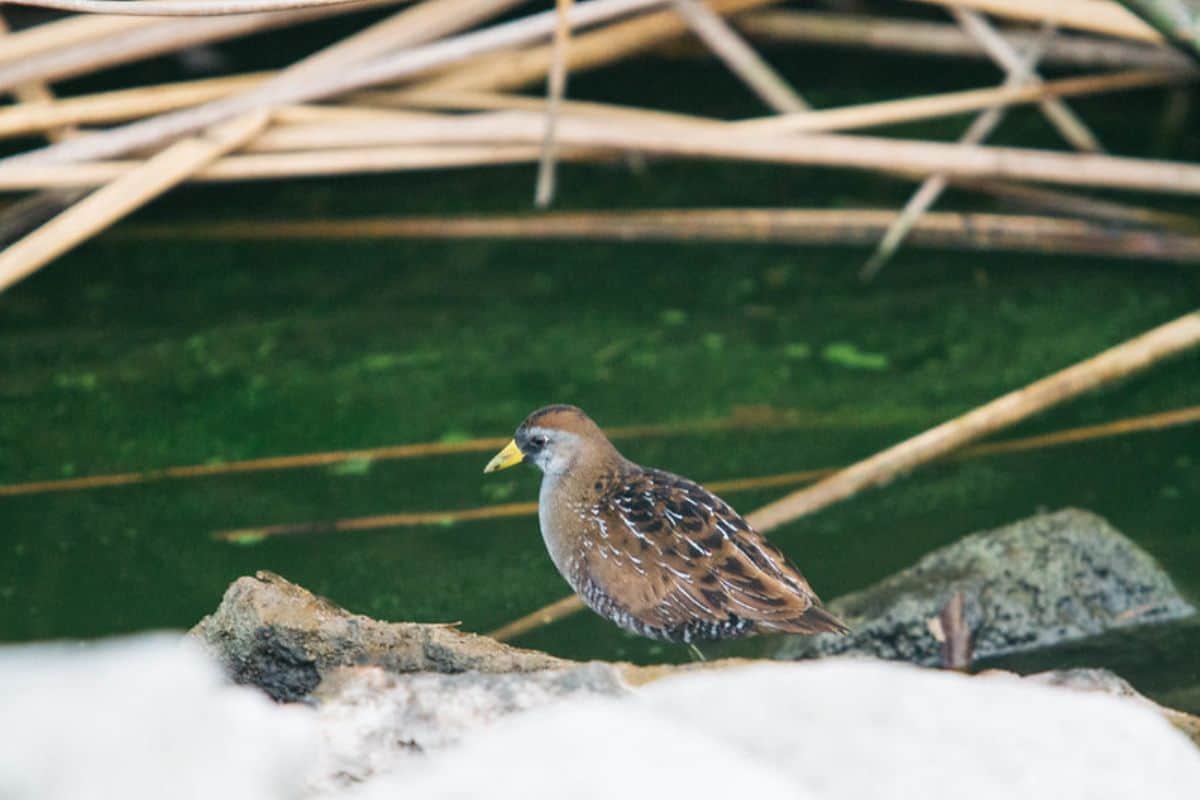
The Sora is currently classified as a species of Least Concern on the IUCN Red List of Threatened Species. This designation indicates that the overall population of Soras is relatively stable and not currently facing significant conservation threats.
However, it’s important to note that wetland loss and degradation, caused by factors such as urban development, agriculture, and drainage for land conversion, can impact the Sora’s habitat availability.
Destruction or alteration of wetlands can disrupt their breeding and foraging areas, potentially affecting the species. Conservation efforts often focus on the preservation and restoration of wetland habitats, which benefit not only the Sora but also a wide range of other species that depend on these ecosystems.
Interesting Facts
1. Elusive wetland dweller
The Sora is known for its secretive nature, often hiding within dense marsh vegetation, making it more often heard than seen.
2. They are muddy foragers
They have a unique foraging behavior, probing and pecking at the mud and vegetation with their long, slender bills to find small invertebrates and plant matter.
3. Precocial chicks
Sora chicks are precocial, meaning they are relatively independent and mobile shortly after hatching. They leave the nest quickly and start foraging alongside their parents.
4. Long-distance travelers
Some Soras migrate as far south as Central America and the Caribbean during the winter, taking advantage of suitable wetland habitats along their migration route.
Frequently Asked Questions
1. Is the Sora a migratory bird?
Yes, the Sora is a migratory bird. It undergoes nocturnal migrations, traveling long distances between its breeding and wintering grounds. These migrations help the species access suitable wetland habitats throughout the year.
2. How long do Soras live?
The average lifespan of a Sora is around 2 to 3 years. However, some individuals can live up to 5 years or longer if they survive the various challenges they face in their wetland habitats.
3. Are Soras social birds?
While Soras are not highly social birds, they can be found in loose flocks during migration. They may also engage in territorial displays and duets during the breeding season but generally prefer solitude within their preferred wetland habitats.
4. What are some predators of the Sora?
Predators of the Sora include various mammals such as raccoons, foxes, and snakes. Birds of prey like hawks and owls also pose a threat to the Sora, especially during nesting and roosting periods.



